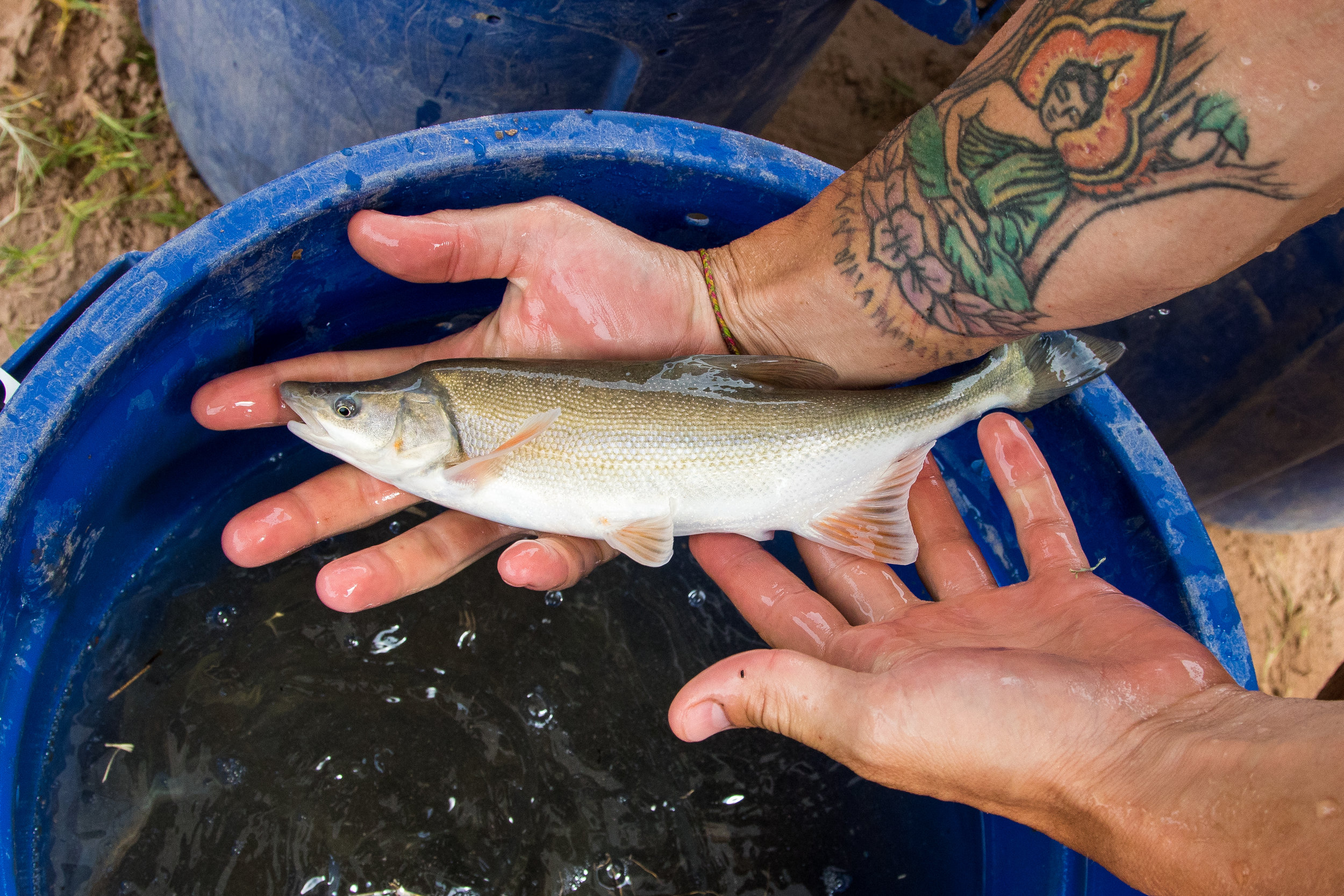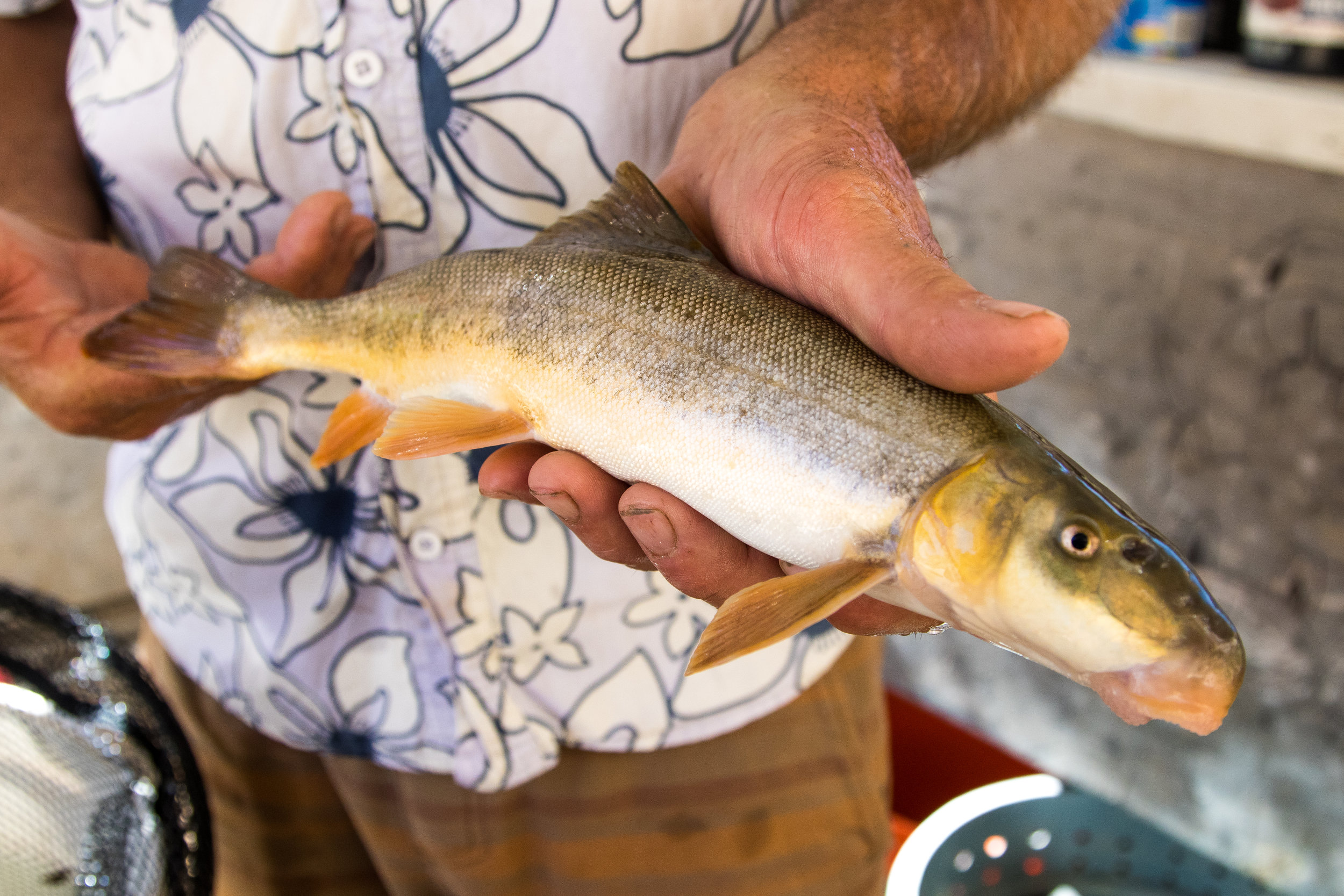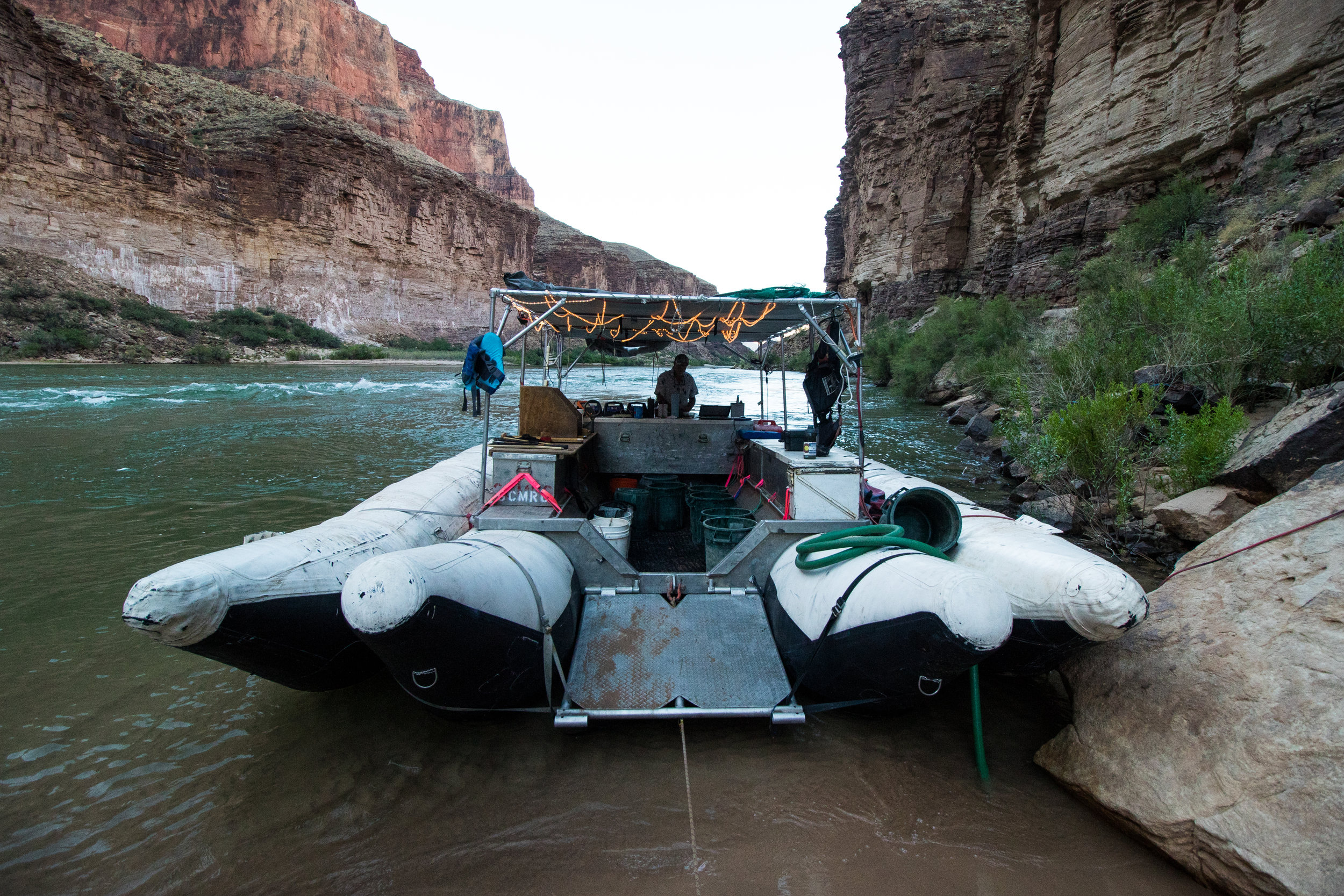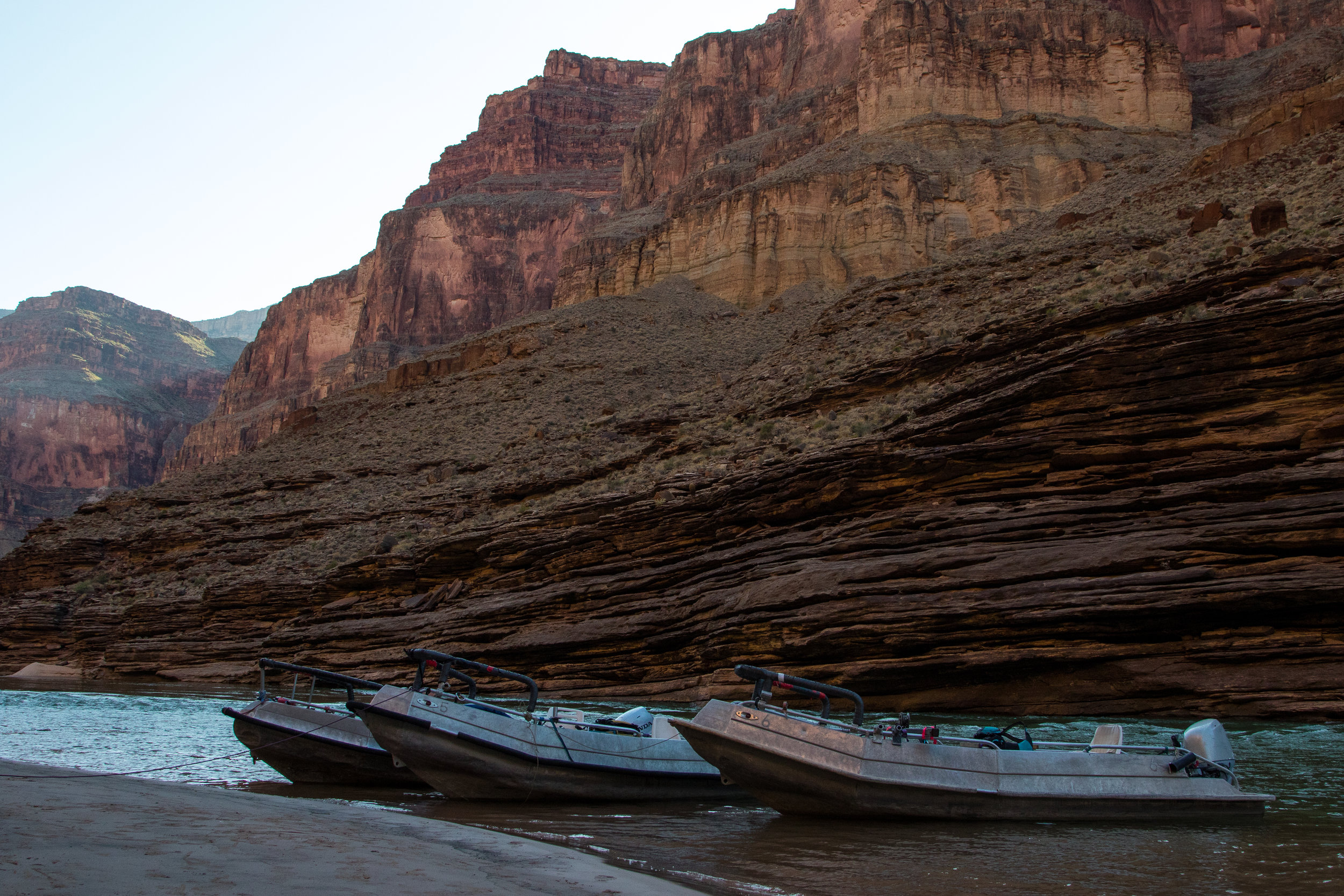The three weeks I just spent in the Grand Canyon were not a vacation by any means. As a volunteer for Grand Canyon Monitoring and Research Center (GCMRC), a subunit of USGS, I helped with a larger study of juvenile humpback chub. Mike Yard, a fisheries biologist at GCMRC, runs several of these trips each year, collecting data on the population and distribution of the chub. I was lucky enough to go along for the ride, squeeze and tag lots of fish, and learn all about the problems the species face.
The chub are a native and endangered species in the Canyon, and their survival depends on the success of the little guys. On one of our first nights in the Canyon, Yard made it clear to me that from a strictly biological standpoint, the humpback chub can no longer be considered “native fish” in this stretch of river. Glen Canyon Dam has fundamentally changed the Colorado River in the Grand Canyon, from the temperature to the turbidity, to the river channel itself. While it is easy to point fingers at Glen Canyon Dam directly, Yard says that he suspects the lack of organics flowing through the modern Colorado River as a result of the Dam are a significant factor to the decline of the chub. But, he also made it clear to me several times that he, as a scientist, can never be 100% certain as to what’s going on underwater.
These days, the humpback chub are primarily concentrated around the Confluence of the Little Colorado River (LCR) and the Colorado (river mile 61.7), the mouth of Havasu Creek (river mile 157.3), and near Fall Canyon (river mile 212). Yard and other scientists believe the fish like the slightly warmer temperatures and nutrients flowing from the LCR and Havasu, but the population explosion near Fall Canyon is largely inexplicable aside from slightly warmer water temperatures.
For each trip that Yard and GCMRC puts on, he hires 6 boatmen (one for each of the six boats), at least four electro-fisherman, and a few volunteers. They spend two nights trout fishing upstream of Lee’s Ferry, and a night near House Rock Rapid (river mile 17.1). Lee’s Ferry is a gold-medal trout fishery, so part of his study is to monitor the trout populations before studying the native species. Next they travel downstream to the LCR (river mile 62) for six nights of fishing, then it takes a few travel days to get to Fall Canyon (river mile 212), where another six nights are spent fishing, before taking-out at Diamond Creek (river mile 226).
By fishing, I mean hoop-netting and electrofishing. And with the amount of fish that we end up with each night, it honestly should be called “catching”. Upstream of Lee’s Ferry, we were up until 3am both nights catching fish and processing them; for a total of nearly 1500 fish in one night. At Fall Canyon, we caught nearly that in one day just from hoop-netting! I worked a 12-hour shift that day on the processing boat, measuring, weighing, and tagging fish. At the end of the trip, we had caught more than 10,000 individuals— that’s more fish than I’ve ever seen in my life.
Compared to my last science trip in 2017 with Arizona Game and Fish (AZGF), this trip was much, much more intense. AZGF mostly does fish monitoring, or collects data to get a general idea of the overall population trends and distributions of the various native species throughout the Canyon. We worked our way through the entire Canyon, setting 20 or so hoop nets each night and checking on them during the day. Yard at GCMRC, calls himself “greedy” when it comes to data. He works tirelessly day after day in the intense heat of the Canyon (over 115 degrees on some days), to collect as much data as possible. He’s working towards answering specific research-based questions about the chub, like why they’re declining and why they’re doing well in specific places in the Canyon. On Yard’s trip, we only sampled for native fish in two locations: below the LCR and at Fall Canyon instead of throughout it. We spent six nights in each location and set 120 hoop nets in both stretches of river. For me, this was crazy, and I loved it.
One day, below the LCR, while waiting for our next batch of fish to be brought in from the hoop-netters, I asked Yard why we, as in the general population, should care about the survival of a single native species such as the humpback chub. For the record, I definitely care, I was just curious how he answers this question because I get asked it as an environmental studies major all the time. He gave me a few reasons, here they are in quick bullet points:
The humpback chub, as with any species, are an integral piece to the giant puzzle we call Planet Earth. If we want to further understand how our Planet works, the humpback chub are just one piece of the puzzle.
Everything in the natural world is interconnected. If the humpback chub die off, another species certainly will, creating a slippery slope of extinction. We’re already seeing this around the world with the effects of climate change.
We should (arguably) take responsibility for our actions. We dammed the Colorado River and completely altered its natural ecosystem. Now that we realize the adverse effects of our actions, we should work to find solutions and to protect an innocent species for their intrinsic value so we can preserve the natural world for a sustainable future.
Whether or not the humpback chub will make it as a new nonnative fish in a changed Colorado River, we can’t be sure. But with the help of Yard and other scientists, we’ll certainly gain a better understanding of their habits, which hopefully increase their survival.



